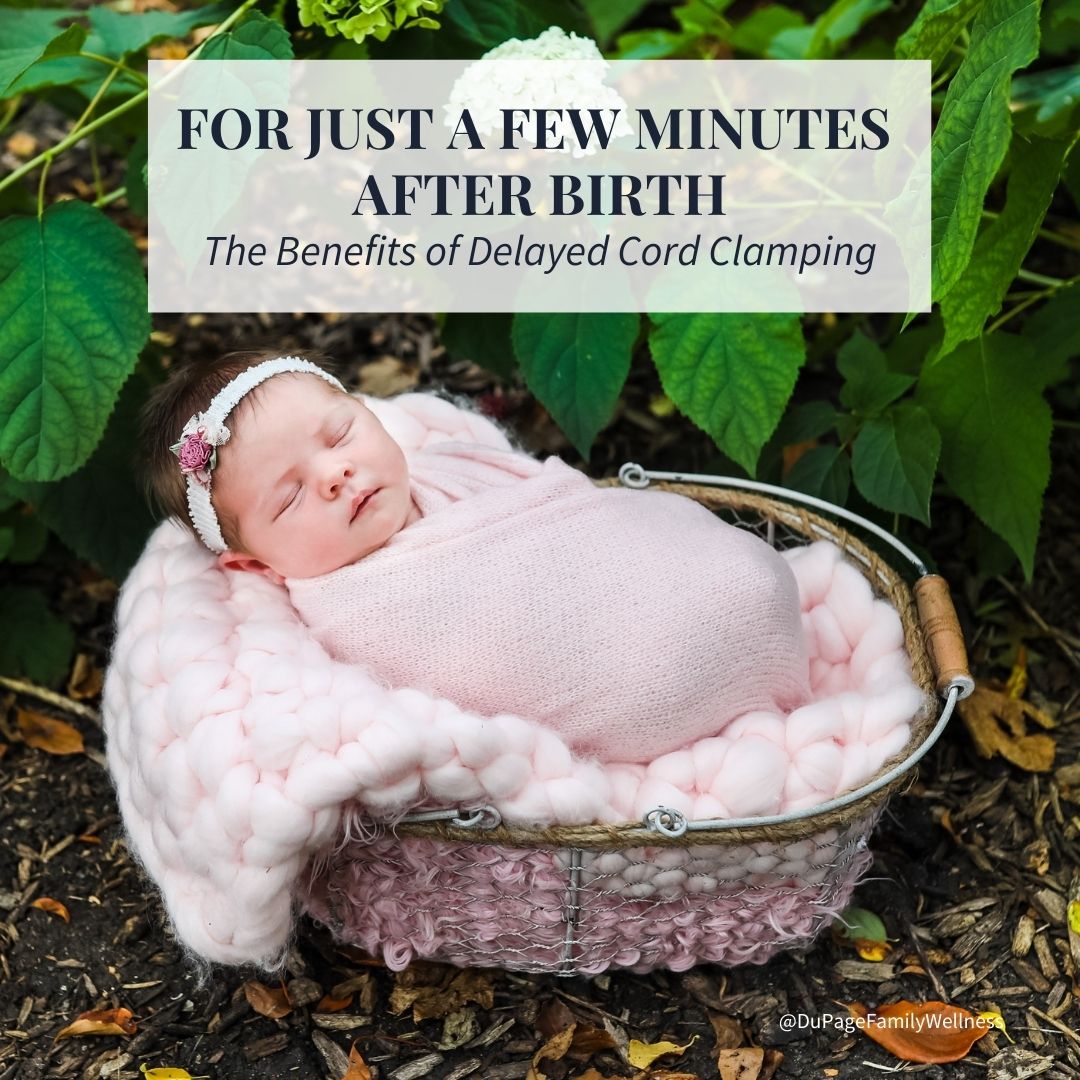 The moments after birth are amazing. You finally get to meet the precious little life that your body has brought into the world. In spite of the exhaustion from the intensity of labor and delivery, holding your baby in your arms for the first time makes it all worth it!
The moments after birth are amazing. You finally get to meet the precious little life that your body has brought into the world. In spite of the exhaustion from the intensity of labor and delivery, holding your baby in your arms for the first time makes it all worth it!
Ideally, these moments will provide mom and baby time together to bond. This may include skin to skin contact and the beginning of the nursing relationship. It is an exciting time for dad and other loved ones as well, as they can now become more involved with the baby’s care.
As the baby adjusts to the world outside of the womb, it is important to honor this transition. One way we can honor the transition is through delayed cord clamping, which allows the baby to receive all the benefits available from the umbilical cord and placenta.
The Umbilical Cord & Placenta
Many people give little thought to the incredible jobs of the umbilical cord and placenta, but they are such crucial roles in the well being of the baby. They work together to provide functions that the baby is not yet able to do one their own.
The umbilical cord is the direct connection between mom and baby, throughout the pregnancy. A vein in the umbilical cord brings nutrient-rich oxygenated blood from the placenta to the baby, while two arteries take carbon dioxide and other waste from the baby to be purified in the placenta.
Cutting the Cord
Since the early 1960’s, it has been standard for doctors to cut the cord seconds after birth.
This is done by clamping the cord in two places and cutting it in between. A small part of the cord remains attached to the baby’s belly button until it dries up and falls off a couple weeks after the birth.
It was thought that early clamping would prevent postpartum hemorrhaging in the mother. This belief has since been disproved, but this practice has remained common even today despite evidence that delayed cord clamping may be really beneficial to the baby.
Read more ...
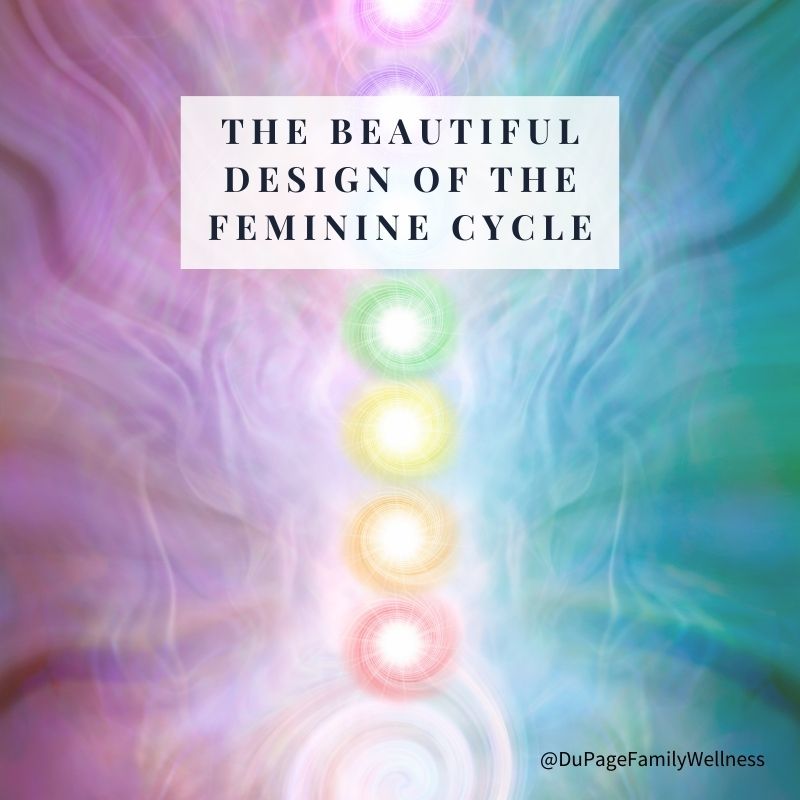
It’s not often that women talk about their menstrual cycle in a positive light. There is often a negative connotation about periods as well as the emotional and physical sensations that are often experienced throughout the cycle.
But when you understand the complicated dance of hormones that’s going on in your body, it’s actually quite amazing and gives you some really important information. I encourage all women to be empowered by understanding their cycle. They can use that information not only to know if they are fertile, but as a sign of health. Let’s take a step back and look at the amazing design of the female body!
What to Expect During Your Period
An average flow for a period will measure around 50ml or 3T over the course of 2-7 days. Anything under 25ml is considered a scanty flow, while over 80ml is considered an excessive flow. (You can estimate your flow knowing that regular pads/tampons hold about 5ml, while super pads/tampons may hold up to 10ml.)
Blood becomes darker when it is exposed to air, so a more rapid flow will produce a brighter red color. As the flow slows down towards the end of the period the flow may become more brownish-red in color.
Since your period is the shedding of the lining of your uterine wall, tissue from the lining of your uterus may be noticed along with the blood. You should see a mostly liquid flow, but a few small clots (up to the size of a dime) is nothing to be alarmed about.

Listening to Your Period
Good normal predictable periods are signs of health. When things are off with them, it is important to pay attention. Listening to what our bodies are telling us through our periods can give us valuable information.
For example, spotting prior to your bleed likely means that your progesterone isn't high enough. And while painful cramps aren’t uncommon, they aren’t normal either and can be a sign of excessive inflammation. These things aren’t necessarily a big deal, but should be noticed.
Our cycle is influenced by what was going on in our lives 3-4 months ago. Sometimes stressful events will give us a funky period. But if your cycle persists in being irregular, let’s talk about it. There are many things that can be done to encourage a healthy cycle and period.
Read more ...
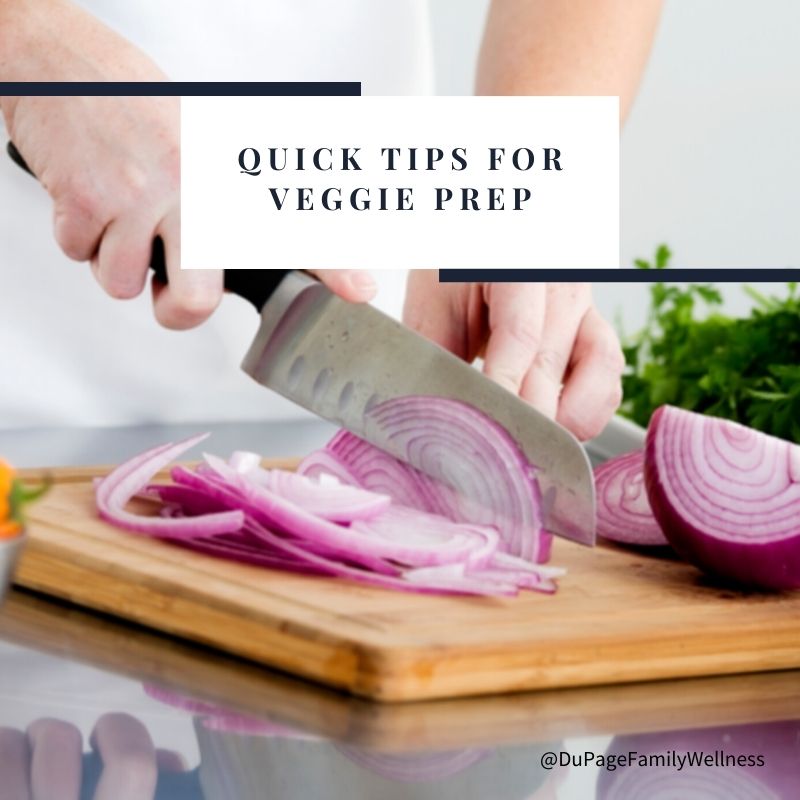 One of the main concerns people have when trying to eat a nutrient-rich diet of whole foods is time! It takes time to plan a meal, shop for ingredients, prep the meal, and cook it. Even people who know food cooked at home is healthier option can feel overwhelmed by the time it takes to prepare a meal.
One of the main concerns people have when trying to eat a nutrient-rich diet of whole foods is time! It takes time to plan a meal, shop for ingredients, prep the meal, and cook it. Even people who know food cooked at home is healthier option can feel overwhelmed by the time it takes to prepare a meal.
It is important to recognize this reality and look for ways to make cooking from scratch a little easier. Once we become more confident in our ability to create a tasty meal quickly, we will be less tempted to grab a meal of processed food.
Since fruits and vegetables are important ingredients in most real food recipes, learning to cut them quickly will be important.
Chopping Quickly by Hand
Learning to chop and dice vegetables is a game changer. If you are a slow chopper, making meals can seem to take forever. Cutting will go so much faster for you with the proper knife, a little practice, and the following cutting trick.
Let’s start by considering the best type of knife for the job. Many people feel more comfortable with smaller knives. But chopping will be quite a bit more efficient with a big sharp knife. It can be intimidating to use a large knife, but don’t let that hold you back from trying. Just start slowly as you get used to it, and before long you will be chopping like a pro.
Now that you have a good knife for the job, here is a trick that is especially helpful for those circular vegetables - onion, zucchini, carrot, eggplant - that keep rolling around as you try to cut them.
- Cut the vegetable in half long ways
- Place the flat sides down, so the food doesn't roll away from you.
- Make quick slices lengthwise.
- Slice in the other direction, across all the strips.
- Use them in your recipe or eat them straight.
It takes time to master any skill. But the more you chop, the faster you’ll get!
Using a Food Processor
Many people are intimidated to use a food processor, but it is such a helpful tool. It slices and shreds things so efficiently and evenly.
Once you set it up, you can slice (or shred) a bunch of vegetables really quickly. It’s helpful to think about what vegetables you will need for the next several days. Even if you aren’t ready to cook all your meals at once, you can prepare the vegetables. This keeps you from having to set up your food processor and clean it multiple times throughout the week.
Read more ...
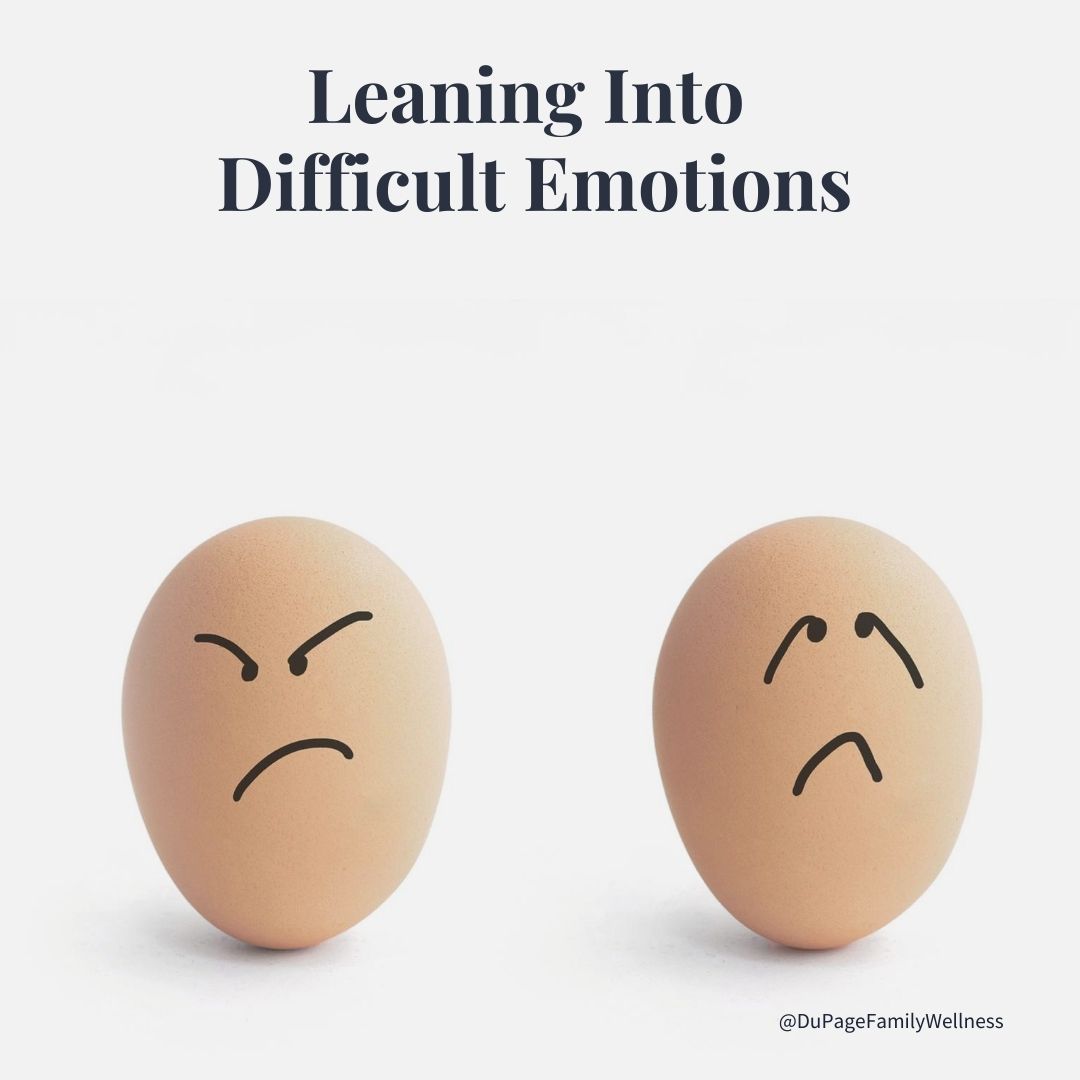
Our world has been in a state of chaos for much of this year and many people are feeling an intense emotional load as a result. What started as a two week shelter in place order has led to months of isolation. Work, school, and social connections have all been disrupted without a clear end in sight.
At first, many people tried to view this as an opportunity for growth - a time to consider what really mattered and focus on that. Some people spent more time with their families, some sewed masks or ran errands for those who couldn’t, while others worked on home projects or took time to declutter.
But as time has worn on, many people are feeling the emotional impact of the situation weighing heavily upon them. With all these difficult things to process, it is a great time to consider how we handle these difficult emotions and if we are dealing with them in a healthy way!
Difficult Emotions NOT Welcome
As a child many people are given the message that their difficult emotions are not acceptable. It may be that their parents didn’t recognize the child’s emotions. They were simply told to “look on the bright side” or “be grateful” for what they had. Some parents were so disconnected from their own emotions, that they couldn’t provide a healthy role model on how to handle intense feelings. Still other children were outright ridiculed for showing “negative” emotions, even being told “stop crying or I’ll give you something to cry about.”
These techniques are often used as an attempt to shut down the child’s emotion when it is uncomfortable for the adult. Even well meaning parents may use them as ways to distract children from dealing with the difficult emotions when the emotion feels too big to handle. But having a parent gently accept and guide their child through these big emotions, is an important step in teaching the child to regulate their own emotions.
Without the ability to self regulate, people are often left either flooded by their emotions or trying to push the difficult emotions away in an attempt to disconnect from them. Being flooded by intense emotions can be really overwhelming, but pushing them away is damaging as well. When we “put on a happy face” before allowing ourselves to experience our emotions, we miss out on the valuable information those emotions are giving us.
Read more ...
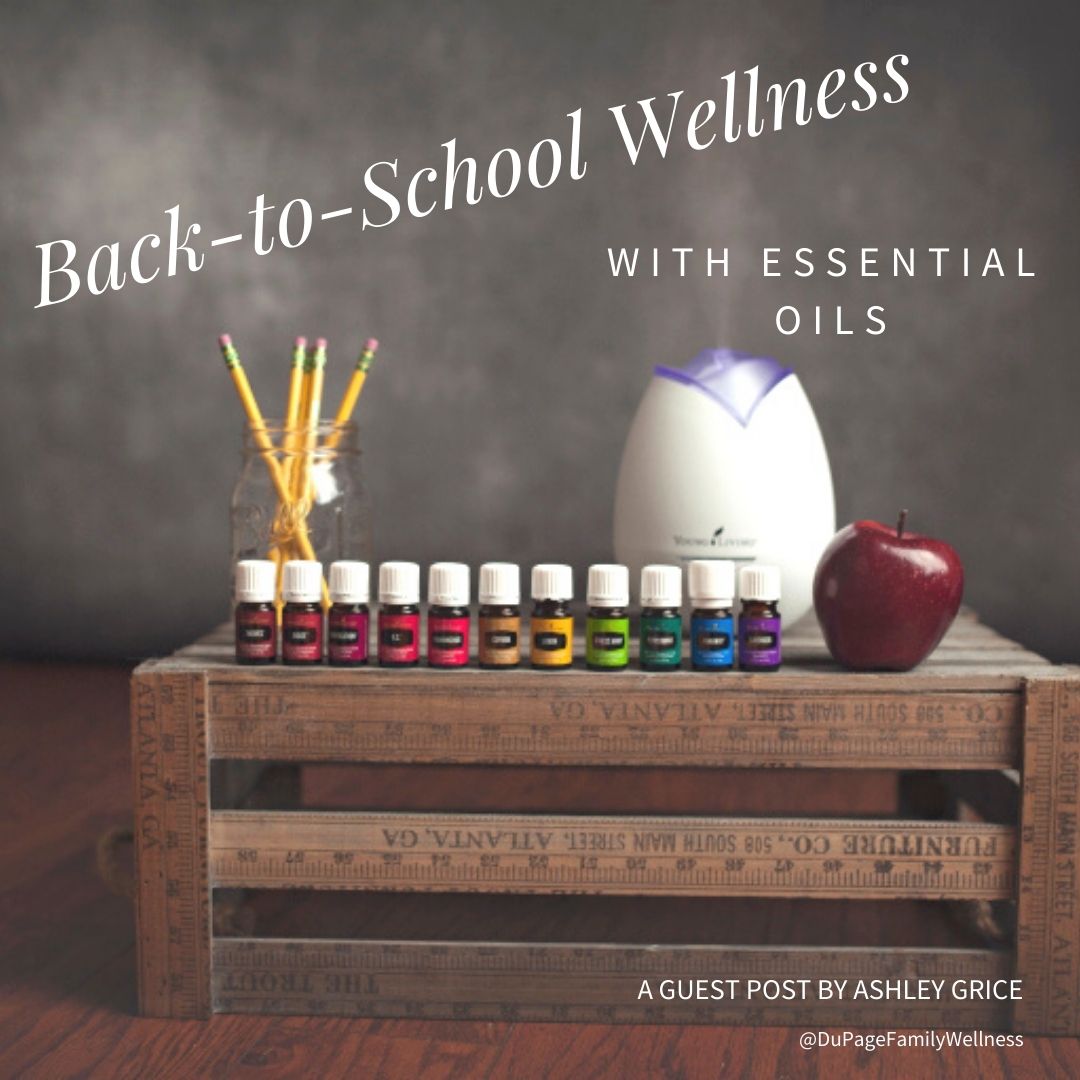
Essential oils are really popular right now, but getting started with them can be overwhelming. It is helpful to have a guide that can teach you how to use them safely and effectively.
In the past couple months I have started to learn more about them. It's been great to have the guidance of Young Living distributor Ashley Grice.
She is a fantastic resource, and we are excited to share this guest blog written by her...
Back-to-School Wellness with Essential Oils
August always brings with it a sense of anticipation and excitement, but there’s nothing quite like the anticipation (and maybe even anxious-laden uncertainty) that we’re being met with this Back-to-School season. Whether your little ones are heading back for in-person education in the classroom, exploring e-learning options from home, or you’re homeschooling for the first (or fifteenth!) time, protecting the physical and emotional well-being of our Littles is at the forefront of our minds.
While we are faced with lots of different choices and decisions as parents, the good news is that keeping them supported and healthy as they embark on -what will likely feel like- a new adventure this year doesn’t have to be overwhelming or difficult.
Young Living Essential Oils has been supporting families on their wellness journeys for over 25 years, and the following are some of my family’s favorite essential oil singles, oil blends, and oil-infused products that have allowed us to experience exceptional health outcomes.
First, all things THIEVES!
Even if you’ve never used essential oils before, you’ve likely heard about this incredible oil blend and its use for overall wellness and immune system support. And those who have used it before know exactly why this is the first essential oil I’d never want to be without!
Young Living’s Thieves oil blend was inspired by the 15th century legend of French thieves who formulated a combination of aromatic herbs and oils that was highly effective in supporting their bodies amidst the bubonic plague that had been ravaging Europe during that time.
Read more ...
 The moments after birth are amazing. You finally get to meet the precious little life that your body has brought into the world. In spite of the exhaustion from the intensity of labor and delivery, holding your baby in your arms for the first time makes it all worth it!
The moments after birth are amazing. You finally get to meet the precious little life that your body has brought into the world. In spite of the exhaustion from the intensity of labor and delivery, holding your baby in your arms for the first time makes it all worth it! 



 One of the main concerns people have when trying to eat a nutrient-rich diet of whole foods is time! It takes time to plan a meal, shop for ingredients, prep the meal, and cook it. Even people who know food cooked at home is healthier option can feel overwhelmed by the time it takes to prepare a meal.
One of the main concerns people have when trying to eat a nutrient-rich diet of whole foods is time! It takes time to plan a meal, shop for ingredients, prep the meal, and cook it. Even people who know food cooked at home is healthier option can feel overwhelmed by the time it takes to prepare a meal.

